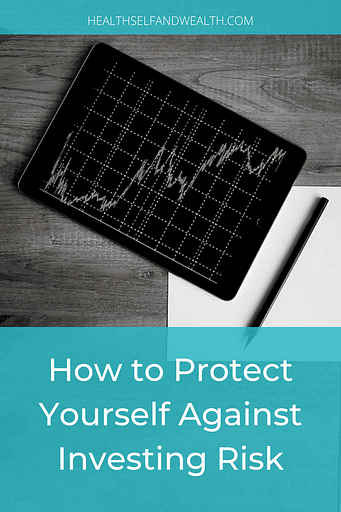
Personal finance gurus attempt to simplify the complexities of investing, the market, and the broader economics. While that is helpful for new investors, it omits some important conversations surrounding investing risk. This is not meant to scare you, but to inform you and empower you to make intentional investing decisions. This post highlights some risks all investors should be aware of including the risks of not investing, lack of information, and potential losses.
Please note: I am not a licensed financial advisor, so this is NOT financial advice. The content in this post is personal opinion based on research and math. Every individual is unique and accordingly will have varying results. Always do your own research before making any decision.
Risk of Not Investing
Some may be hesitant to invest for various reasons. One of those reasons is potentially losing money, which we will dive deeper into later in this post. However, the biggest risk of investing is not investing at all.
If you’re not investing, you are almost guaranteeing that your money will lose value over time. This is because of inflation. That means a dollar you have today will buy you less in the future. Inflation causes prices to go up, which explains why you won’t be able to buy as much with your money in the future. If you are afraid of losing money, you should be scared of keeping all of your money in a savings account.
The biggest investing risk is not investing at all because your money will lose value over time due to inflation.
Risk of Lack of Information
You must understand what you’re investing in. Otherwise, it would be similar to sending a friend to the bathroom alone. Just like a friend, you should never let your money wander away from you without knowing exactly how it will find its way back to you.
If you don’t understand what you’re investing in, you are NOT investing, you are gambling.
You can avoid this risk by doing thorough research to ensure you fully understand what you want to invest in.
Potential Losses
There are two main types of potential losses with an investment. The first is your investment going to zero dollars, meaning you’ve lost all your money. The second is market risk.
Risk of Losing Money
Let’s say you bought a stock of one company (like Apple, Macy’s, Tesla, etc.). For you to lose all your money, the company would have to go out of business.
Over the long term, innovation disrupts the market leaders. For example, Blackberry was the leading phone until Apple came around. Blockbuster was the place to go for entertainment, until Netflix found a better way.
To protect yourself from any single investment from going to $0, index funds offer greater diversification. Instead of owning one stock, you own hundreds or thousands.
For an index fund to go to $0, every single company in the fund would have to go out of business at the exact same time.
You can learn more about one of the most popular index funds here. Fun fact: according to Business Insider, this index fund beats 90% of professionally managed funds over the long term.
Market Risk
In the short-term, there are many factors that influence whether a stock price is going up or down. However, you can avoid losing money by holding your investments over the long term. As long as you sell your shares for a price higher than what you paid, you will profit in the stock market.
When you invest in the market there is inherent risk. Think about the covid-19 pandemic. During that time stock prices fell because of the economic challenges during this difficult time. Larger, external factors can influence market trends.
To protect yourself against large market dips, experts recommend diversifying your portfolio. Diversification means that you are invested in different assets with returns that have minimal correlation with each other. Diversification is the financial equivalent of, “Don’t put your eggs all in one basket.”
For example, if you’ve invested in the total stock market index fund and it begins to decline, you may also own a bond fund that continues to grow during that time.
You can mitigate market risk by investing for the long term and diversifying your holdings.
Conclusion
You’ve learned about three types of investing risk: not investing and losing money with inflation, gambling by not understanding your investments, and losing money in the short term. You can minimize all these to limit the amount of investing risk you are exposed to. Specifically you can do the following:
- Invest to avoid inflation risk
- Conduct research to understand your investments
- Invest for the long-term to avoid short term market risk
- Diversify your portfolio with a variety of funds and asset classes
From here, you can learn more about an index fund that outperforms 90% of professional fund managers.
Also, never miss information that will equip you to build wealth – subscribe!






